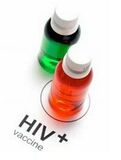Too many variables to be valid
When an Indian medical journal showed that a trial for an HIV vaccine has shown promising results, headlines across the nation presumed that a vaccine has been discovered. Initially it felt that finally a cure for the disease that has claimed more than 25 million lives worldwide came into fruition. However, before the world claims these findings as a milestone, we must take a closer look at the research methods used to test the vaccinations.
The positive outcome of the vaccine was a part of the Thailand AIDS Vaccine trial (RV 144), established by the AIDS Society of India (ASI).
Even the ASI warns the public that the results of the experiment may have minimal practical benefit in the medical future. The plethora of variables in the experiment portrays the positive outcome as more of a fluke than an actual medical achievement. The Secretary General of the ASI, Doctor IshwarGilada speculates that a reason for the outcome of the experiment could be that "people are used to risk-taking behavior under the false sense of security of the impending HIV vaccine," meaning that the participants in the experiments assumed that the vaccine given was an actual prevention of HIV that warranted them to freely engage in dangerous activities that could have lead to contracting the virus.
HIV/AIDS research should only be performed in a situation of lab studies. Lab studies allow scientists to know all the variables existing in their research. A natural observation of over 16,000 participants leads to countless factors that skews the data and negates an irrefutable vaccine. When positive results from a truly genuine experimental procedure are seen, then that is when a HIV/AIDS vaccine milestone has been reached. Until then, we still have a long way to go.
Amir Gorjifard. Son of Mahmoud Gorjifard and Nahid Gorjifard, Amir can be best described by two words: gorgeous and modest. His two loves in this world are his two guitars - his acoustic guitar, E. Roosevelt (he was forced to add the E. due to an overrated … More »
Comments
No comments.
Please ensure that all comments are mature and responsible; they will go through moderation.
